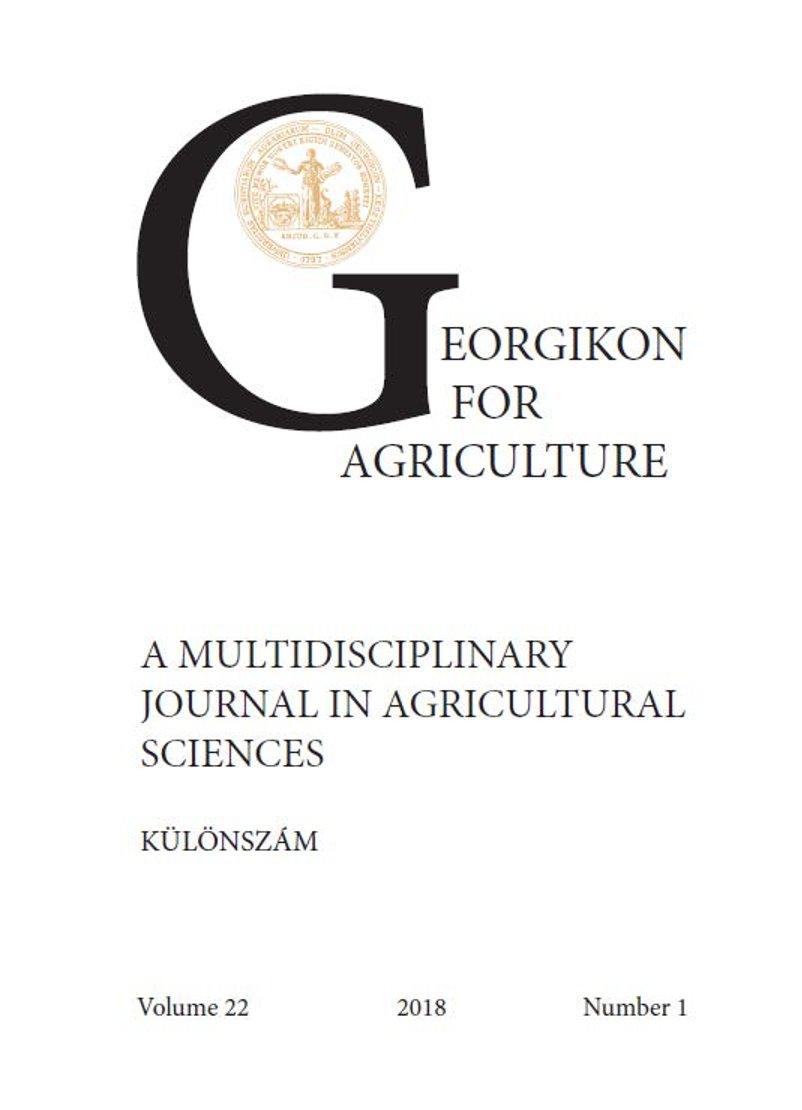A paprika száraz magházkorhadása (Alternaria alternata (Fr.) Keissl.) és a kalciumhiány okozta nekrózis kapcsolata
Abstract
Our examination was to study the relationship between calcium deficiency and the alteration of Alternaria alternata (Fr.) Keissl. in the pepper host plant. The necrotic patch caused by calcium deficiency is a "gate" in which different pathogens can enter the plant, such as Alternaria alternata, a cause of core rotting. In the case of opened style breeds, it causes core rotting. External infection symptoms may also appear on various injuries (sunburn, uneven water supply problems, calcium deficiency caused blossom end rot, etc.) (Glits and Folk, 2000). All pepper cultivars used in our experiments were derived from Szentes. We worked with five species of pepper: Szentesi Cherry Pepper, Szentesi Totál, Captain F1, Kadet F1 and Toldi F1. With the exception of Szentesi Cherry Pepper, these varieties are commonly characterized by the loss of calcium deficiency. The calcium content of peppers was measured by analytical methods. Except for Szentesi Cherry Pepper, the pepper varieties used in our study are commonly caused by the calcium deficiency on which Alternaria alternata can easily infect. We created the Alternaria alternata pure culture from the collected samples, then placed the mycelium on the crosses of the pepper varieties used in the experiment and on the surface of whole berries. All in the whole berries were unable to penetrate the fungus until it was able to settle on the intersections.
References
Kovács, J., Fischl, G. 2014. A paradicsom és a paprika alternáriás betegségei (Alternaria spp.) Pannon Egyetem, Georgikon Kar, Keszthely Agrofórum 44–50.
Glits, M., Folk, Gy. 2000. Kertészeti Növénykórtan, Mezőgazda Kiadó 582.
Metthew, D. T., Salvadore, K. L. 2007. Blossom-End Rot: A Calcium Deficiency Journal of Plant Nutrition. 27 (1) 123–139. https://doi.org/10.1081/PLN-120027551
Bánhegyi, J., Tóth, S., Ubrizsy, G., Vörös, J. 1985. Magyarország mikroszkopikus gombáinak határozókönyve 2. kötet, Akadémia Kiadó, Budapest
Lantos, F. 2011. A kalciumhiány kialakulásának és hiánytüneteinek vizsgálata a paprikatermesztésben. Doktori (PhD.) értekezés, Szent István Egyetem, Gödöllő.
Lantos, F., Mike, K., Monostori, T., Helyes, L. 2012. Evaluation of calcium deficiency symptoms in sweet pepper (Capsicum annuum L.) fruits via visual plant diagnosis and microscopic examination. Acta Horticulturae. 938. 283–289. https://doi.org/10.17660/ActaHortic.2012.938.37
Downloads
Published
Issue
Section
License
Copyright (c) 2018 Csüllög Kitti, Bodnár Dominika, Albert Réka, Tarcali Gábor

This work is licensed under a Creative Commons Attribution-NonCommercial-NoDerivatives 4.0 International License.
Cikkre a Creative Commons 4.0 standard licenc alábbi típusa vonatkozik: CC-BY-NC-ND-4.0. Ennek értelmében a mű szabadon másolható, terjeszthető, bemutatható és előadható, azonban nem használható fel kereskedelmi célokra (NC), továbbá nem módosítható és nem készíthető belőle átdolgozás, származékos mű (ND). A licenc alapján a szerző vagy a jogosult által meghatározott módon fel kell tüntetni a szerző nevét és a szerzői mű címét (BY).




